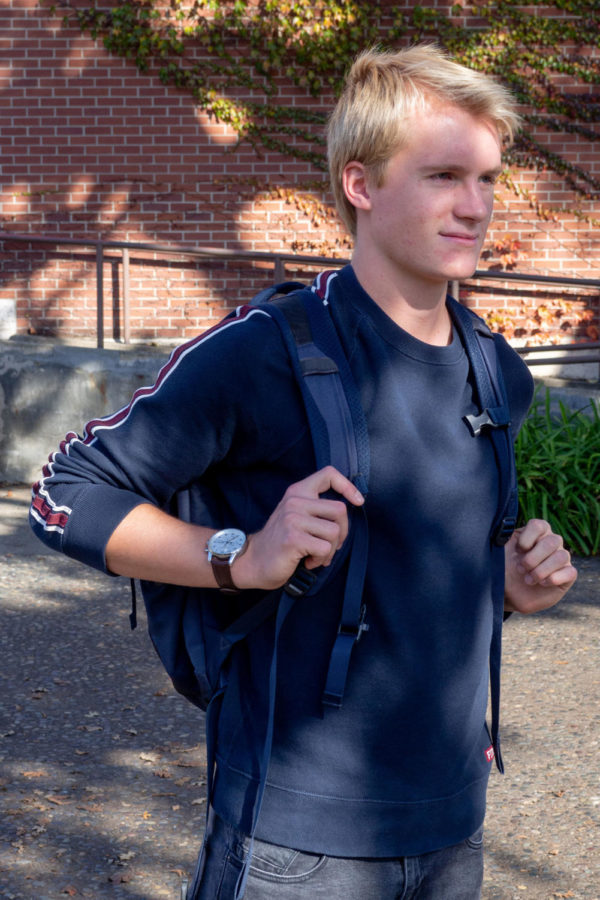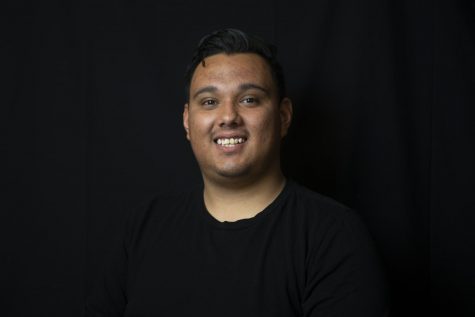It was the early ‘80s when Santa Rosa Junior College opened up to the international community, but it wasn’t until 2014 that outreach efforts gained momentum. When SRJC President Dr. Frank Chong took office, the school had about 50 international students who had found their way here by word-of-mouth.
At that time, the international students’ office was but a desk under Admissions and Records. In four short years, the program has expanded to a full department.
Dr. Chong says he realized the need to expand the international program as a way of promoting cultural exchange and interaction with our neighbors.
“It’s one way of understanding each other’s culture. When these students come here they get to know more about America and in return we learn about them–creating a win-win situation,’’ Chong said.
“We have injected enormous resources and when these students come here, we treat them like our own, we help them get into the right classes and avail them with all the tools necessary to make them feel at home.’’
Vayta Smith is the department director, and with her team, she has set up more than six global recruitment centers spread across the world.
Many students who have enrolled in the program credit its easy access to various services that are crucial for someone entering the country for the first time.
With good coordination, students are given the necessary tools to help them navigate the visa process.
Kenko Yokota, 20, from Japan said ‘’it was easy to go through the visa process after the international program prepared all the necessary paperwork, and my parents never faced any hurdles at the embassy.’’
Yokota is amused by California hospitality and is all smiles when he compares what he describes as the “flat roads’’ of California to those of Japan.
“The roads here are so smooth I can ride my bike all day long — anywhere,’’ Yokota said.
Smith marvels at the efficiency of SRJC’s international program. “Once a student is here, the college will help secure all the necessary paperwork to enable them to work and drive,” she said. “Though public transportation is readily available, driving is a big part of American life.’’
On other pertinent issues such as student housing, she said her office actively helps international students through programs like homestay, which connects students with American families who charge a reasonable fee for room, board and utilities.
For students who prefer to live independently, SRJC helps them figure out the leasing process with rental property owners. Most important, the school doesn’t require any student to reside in a particular place; students can live with their own family members as well.
Davina Daehn, 20, a German international student, stays with her aunt as she progresses through the early stages of her exchange. Within four months she’s been able to grasp the English language, thanks to the English Language Service, a program which helps students from non-English speaking countries. She has also been able to obtain a driver’s license.
Daehn is grateful for the way people in the U.S. have treated her thus far, “Everyone is willing to extend help.’’
Jennifer Kanto Rakotoarivelo, 18, is from Madagascar, an island off the southeast coast of Africa. She wonders how so many people from all walks of life can live so happily together.
Rakotoarivelo has been in the country for two months and has only studied English, but she’s blown away by her teachers at the English Language Services.
‘’I have only been speaking French since my birth, but these teachers here are miracle workers,” she said. “I can’t imagine I now speak English.”
Rakotoarivelo will officially start her SRJC classes in the Spring.
She is struck by how Americans are free to share their opinions on anything. On this note, she felt free to say she isn’t yet into American food.
Though federal law prohibits international students from accessing financial aid, the international program grants up to $1,000 per semester to some students. The money comes from funds donated by Santa Rosa Junior College international alumni and local well-wishers. The international program selects recipients based on individual real life stories.
International students receive visas for the course duration, which may last up to three years. Since SRJC’s international program spans only two years, the college helps students transfer to four-year colleges.
SRJC works with all California universities. International students have transferred to UC Berkeley, Sonoma State University, UC Davis and UCLA among others.
“I do recommend to any parents wishing to send their children to seek education in the U.S. to do it through SRJC,” said Constance Raby, 21, a communications studies major from France. “It is not only a big financial a leap, but it’s also a great pathway from high school to a four-year college.’’
Raby added that SRJC has helped her to build strong social, technical and academic skills that would have been more challenging at a large university. She credits SRJC with making access to professors, tutors and student teaching assistants easy.
Prospective applicants must have a high school diploma and demonstrate some English proficiency, unless they come from countries where English is the language of instruction. Applicants should be 18 years or older.






lance johnson • Dec 15, 2018 at 10:14 am
Congrats to Dr. Chong and his efforts because being an international student away from home is difficult, compounded by our complex culture and language problems. Welcoming and assimilation assistance must come from numerous sources, including the White House, to aid these young people embarking on life’s journey. Most struggle in their efforts and need guidance from schools’ international departments, immigration protection, host families, concerned neighbors and fellow students, and even informative books to extend a cultural helping hand.
Something that might help anyone coming to the US is the award-winning worldwide book/ebook “What Foreigners Need To Know About America From A To Z: How to Understand Crazy American Culture, People, Government, Business, Language and More.” Used in foreign Fulbright student programs and endorsed worldwide by ambassadors, educators, and editors, it identifies how “foreigners” have become successful in the US, including students.
It explains how to cope with a confusing new culture and friendship process, and daunting classroom differences. It explains how US businesses operate and how to get a job (which differs from most countries), a must for those who want to work with/for an American firm here or overseas.
It also identifies the most common English grammar and speech problems foreigners have and tips for easily overcoming them, the number one stumbling block they say they have to succeeding here.
Good luck to all at SRJC or wherever you study or wherever you come from, because that is the TRUE spirit of the American PEOPLE, not a few in government who shout the loudest! Supporters of int’l students must shout louder.